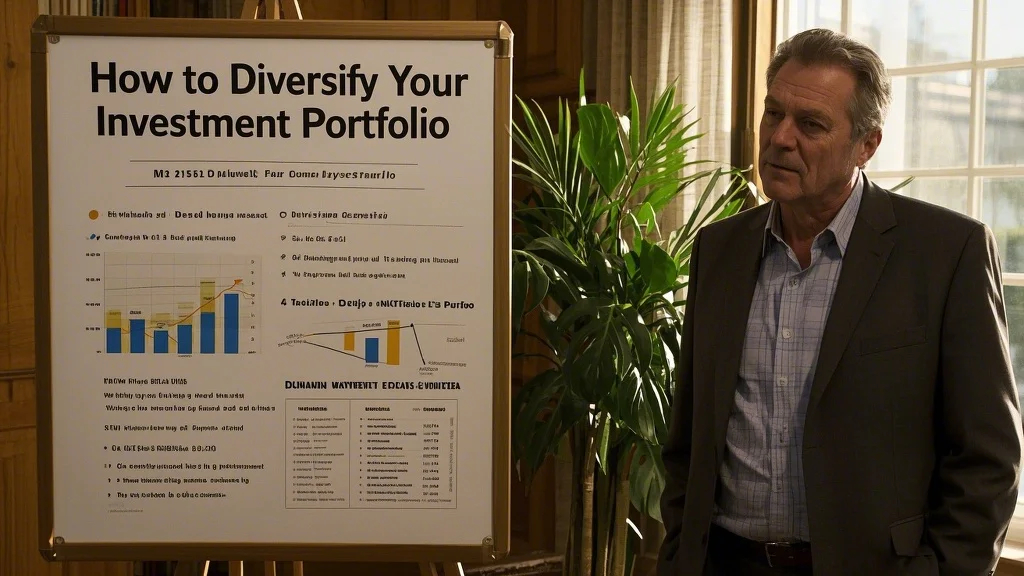The Art of Building a Resilient Investment Mix
Creating a well-rounded investment portfolio requires more than just picking different assets at random. True diversification involves carefully selecting investments that respond differently to various economic conditions, creating a balance that can weather market storms. Many investors make the mistake of thinking they’re diversified because they own multiple stocks, only to discover during downturns that all their holdings move in the same direction. The key lies in understanding correlation – how different asset classes interact with each other under various market scenarios.
Traditional portfolios often focus solely on the stock-bond mix, but modern diversification strategies go much further. Geographic diversification protects against country-specific risks, while sector diversification prevents overexposure to any single industry’s fortunes. Market capitalization diversification ensures participation across company sizes, from stable blue chips to growth-oriented small caps. Time diversification – staggering investments over periods rather than making lump-sum commitments – helps mitigate timing risk. Together, these layers of diversification create portfolios that can deliver more consistent returns with less volatility over time.
Protecting Your Assets Through Strategic Allocation
Effective wealth protection strategies begin with recognizing that different assets serve different purposes in a portfolio. Growth assets like stocks build wealth over time, while defensive assets like high-quality bonds preserve capital during downturns. Inflation-hedging assets like Treasury Inflation-Protected Securities (TIPS) or commodities maintain purchasing power. Cash equivalents provide liquidity for opportunities or emergencies. The exact mix should reflect your personal financial goals, time horizon, and ability to withstand market fluctuations.
Rebalancing plays a crucial role in maintaining intended risk levels. As markets move, portfolios naturally drift from their target allocations – winners become overweighted, increasing risk, while losers become underweighted, potentially missing recovery opportunities. Regular rebalancing forces the disciplined practice of selling high and buying low while keeping the portfolio aligned with your risk tolerance. Many investors find quarterly or annual rebalancing effective, though the exact frequency matters less than maintaining consistency and avoiding emotional decision-making.
Exploring Beyond Traditional Markets
Incorporating alternative investments can further enhance diversification by introducing assets with low correlation to traditional stocks and bonds. Private equity and venture capital offer exposure to companies before they go public, though with substantial liquidity constraints. Hedge funds employ strategies designed to generate returns regardless of market direction. Collectibles like fine art or rare wines can appreciate while providing aesthetic enjoyment, though they require specialized knowledge and carry high transaction costs.
Commodities and natural resources represent another alternative category, often moving counter to financial assets during inflationary periods. Cryptocurrencies have emerged as a new alternative class, though their extreme volatility warrants cautious allocation. The common thread among successful alternative investors involves thorough due diligence and conservative position sizing – these complex investments typically should constitute only 10-20% of a well-diversified portfolio. Their value lies not in outsized returns but in their ability to behave differently than conventional holdings during various market conditions.

Implementing Robust Risk Controls
Sophisticated risk management separates professional investors from amateurs more than stock-picking ability ever could. Position sizing represents the first line of defense – limiting any single investment to a percentage of your portfolio that wouldn’t cause catastrophic damage if lost completely. For most individual investors, this means keeping individual stock positions below 5% and sector exposures below 20% of the total portfolio.
Volatility management techniques help smooth the investment journey. Minimum volatility ETFs or low-beta stocks can reduce portfolio swings without necessarily sacrificing returns. Options strategies like protective puts or collar strategies provide insurance against downturns, though they come with costs that affect long-term performance. Stress testing your portfolio against historical crisis scenarios – like the 2008 financial crisis or 2020 pandemic selloff – reveals hidden concentrations that might not be apparent during calm markets.
Incorporating Tangible Assets for Balance
Real estate investing offers unique diversification benefits that paper assets can’t replicate. Physical properties generate rental income while potentially appreciating in value, often with low correlation to stock markets. REITs provide real estate exposure without the hassles of property management, trading like stocks with high liquidity. Real estate crowdfunding platforms allow smaller investors to participate in commercial properties that were previously inaccessible.
The inflation-hedging characteristics of real estate make it particularly valuable during periods of rising prices, as rents and property values often increase alongside living costs. However, real estate carries its own risks – illiquidity, local market downturns, and unexpected maintenance costs among them. Geographic diversification matters tremendously in real estate holdings, as does proper due diligence on cash flows, expenses, and local market conditions before making commitments.
Customizing Your Diversification Approach
There’s no one-size-fits-all formula for portfolio diversification – the ideal mix depends entirely on individual circumstances. A young professional with stable income and decades until retirement can tolerate more growth-oriented allocations than someone nearing retirement. Entrepreneurs with significant business exposure might emphasize more conservative investments to balance their overall risk profile.
Personal interests and knowledge should also inform diversification decisions. Those with industry expertise might make informed concentrated bets in their areas of knowledge while maintaining broad diversification elsewhere. Investors with international experience might feel comfortable with greater global allocations than those unfamiliar with foreign markets. The common thread is self-awareness – recognizing both your strengths and limitations when constructing your portfolio.
Maintaining Discipline Through Market Cycles
The true test of a diversified portfolio comes during market stress, when emotional impulses threaten to override carefully constructed plans. During bull markets, the temptation to abandon diversification for concentrated bets in hot sectors grows strong. Bear markets test the resolve to maintain allocations to underperforming assets that provide crucial diversification benefits.
Successful investors view diversification not as a performance drag but as insurance against uncertainty. They rebalance religiously, add new money systematically, and avoid performance-chasing behavior that undermines strategic allocations. They understand that different assets shine at different times, and that maintaining exposure to all of them ensures participation in whatever segment leads the next market advance. This disciplined approach, while sometimes boring, proves remarkably effective at building and preserving wealth across full market cycles.
